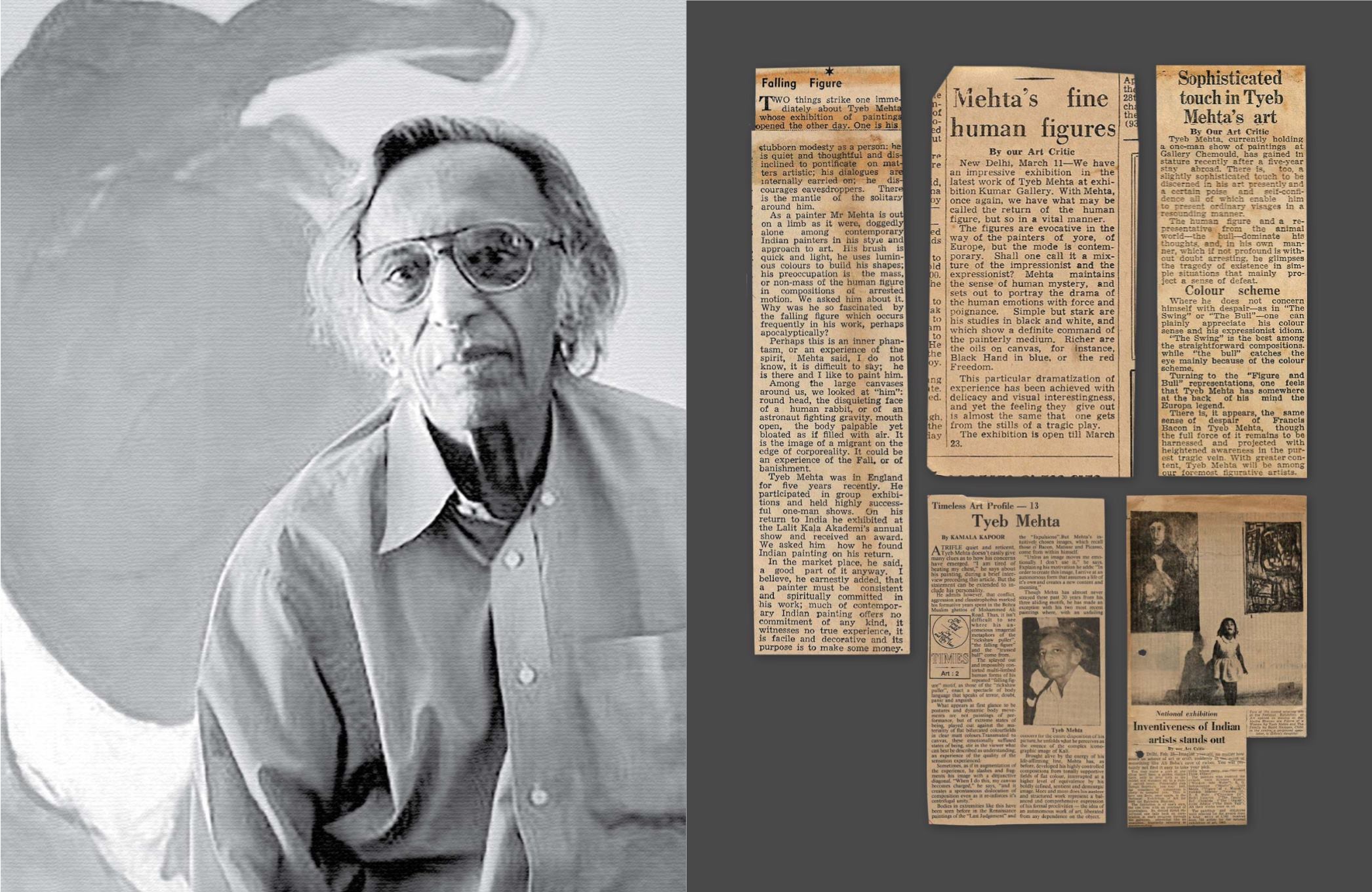

Extensive media coverage of Tyeb Mehta's art in the 1960s lauded the power and presence of his paintings.
"Unless an image moves me emotionally, I don't use it."
TYEB MEHTA
paintings are compositions of fractured
planes, distorted limbs and agonised faces,
falling into an undefined abyss. A sense of
unease and disorientation results from the
gravity‒defying fall, caught in the act of
dropping into the unknown.
Mehta’s life was indelibly marked by the
Partition. The sectarian violence remained
the underlying element in his oeuvre.
In its depiction of reigned in violence,
the painting evokes the notion of the
Absurd, conveying a fundamental sense
of disharmony which was so urgently
explored by artists and writers in the post‒
war climate of Europe. It was only logical
that Mehta, who shared similar struggles
with the self, would be drawn to this
philosophy in his art.
“In Tyeb’s paintings, the figure is the bearer
of all drama, momentum and crisis, a
detonation against the ground it occupies
and commands; by contrast, the field
appears, at first sight, to be all flattened
colour, a series of bland, featureless planes
that impede the manifestation of the
figure, or even fragment the figure into
intriguing shards. Only gradually does the
eye, unpuzzling the painting, recognise that
Tyeb treats figure and field as interlocked
and not separate entities. His paintings
derive their enigmatic compound of
shock and coolness, anguish and elegance,
from the complex interweave of these
elements.” (Hoskote et. al., p. 4)
Tyeb Mehta
Source: Wikimedia Commons
116
117


















